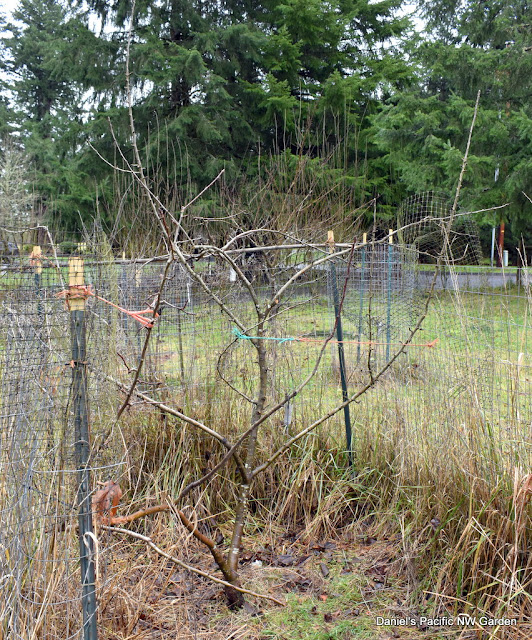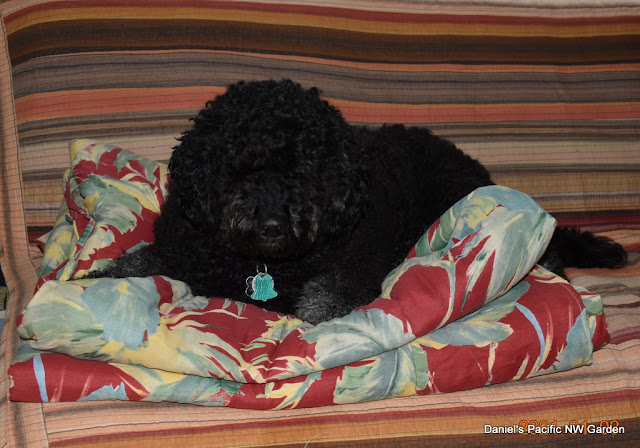There is a role for summer and for winter pruning of apples. Summer pruning is more dwarfing, but can expose apples to sunburn. Growth on winter pruned apples can be too vigorous. There is more time in the winter, and without leaves the form shows up better.
This is Liberty apple on the minidwarfing M27 rootstock. The tree is 20 years old. I moved it from the Vancouver place about 5 years ago. It never did well there, but in Battle Ground got a new lease on life. I don't want branches that are too high to reach with a ladder, but also don't want them so low it's hard to keep the soil clean around the tree and hard to get to the apples. So, I've been progressively removing the lowest branches, and bending the top growth to a horizontal shape, sort of a 3-dimensional Espalier. I bend those, tie them down for a year or two, then shorten branches that grown one them, in the summer by a Lorette-type approach. So far it's working OK.
This is the Jonagold. It's also on M27 but much more vigorous than the Liberty. Probably because it is triploid. I'm trying to use the same approach, bending the upper branches to a horizontal position, then prune for spurs in the summer.
I'm not sure about the rootstock on the Winecrisp apple. It seems to be a dwarf or mid size tree, maybe semidwarfing rootstock. Again, a similar approach. I've added some grafts as well, Sweet-16, Fameuse, and Mile Gibson. So far. the Sweet-16 and Fameuse seem promising. I'm not sure about the Milo and may change that over to something else. Anyway, I'm aiming for the same idea, horizontal top branches. Not pictured.
This was the first tree I grafted. The base tree is Sutton Beauty, on M26 Rootstock. I think. I've added Baldwin, Liberty, Airlie Red Flesh, and Prima. I'm not impressed with Baldwin and might remove it. Same for the Airlie Red Flesh, which is good but can be scabby. No harm in keeping them another year. This tree remains quite dwarf. It needs a little more tying down.
These columnar trees are North Pole on M27. I'm keeping them to single cordon, with spurs about a foot long or less. They do need support.
There are still lots more apple trees that need pruning.











